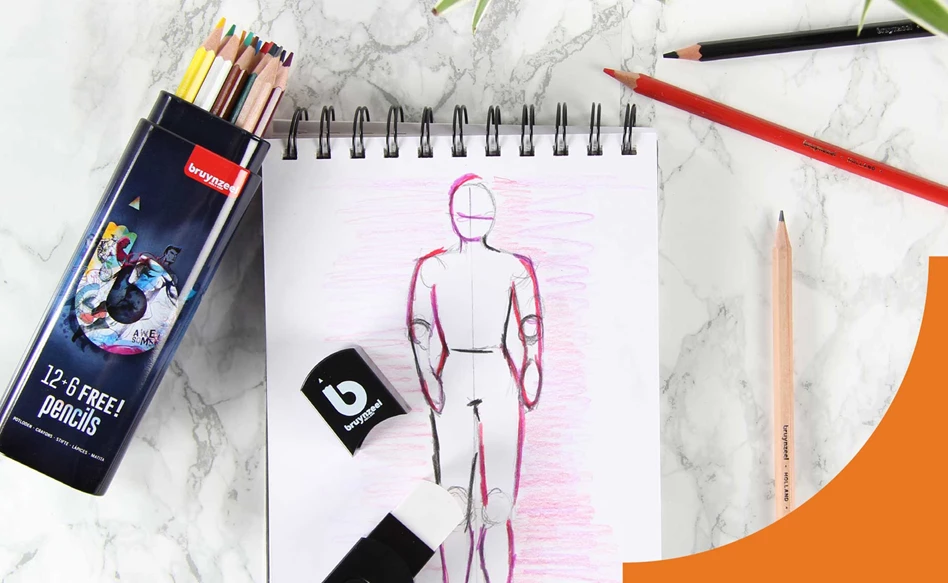
Drawing and sketching paper
For drawing and sketching paper, it is important to know which techniques will be used on the paper. For example, smooth paper works well for creating clean lines. When working with colour and/or graphite pencils, having a bit of structure on the paper is recommended. This allows pigments to remain in the small dimples present on the paper. Sketches are best preserved on acid-free paper - just look at the sketches by the artist Rembrandt!
This paper is suitable for pencils, coloured pencils and charcoal. The difference between sketching paper and drawing paper is that sketching paper is often lightweight and intended for sketching and experimenting. Drawing paper is of higher quality and is usually heavier than sketching paper. It is used to create works that need to be preserved for a long time.
How to use
Sketching paper often comes in thick blocks. Since it is for sketching, you do not necessarily need high grammage or 100% cotton. The surface of the paper is important: it has to be nice to work with. A light structure is recommended so that the pencil has some grip on the paper, helping to improve colour transfer. The paper has to have a certain strength so that erasing does not become an issue. Drawing paper is of a higher quality for more serious work. Typically, drawing paper has a higher grammage.
Taking care of your paper/artwork
It is best to keep your drawings in a folder or drawer so that little to no light can come in, which can help prevent yellowing.







